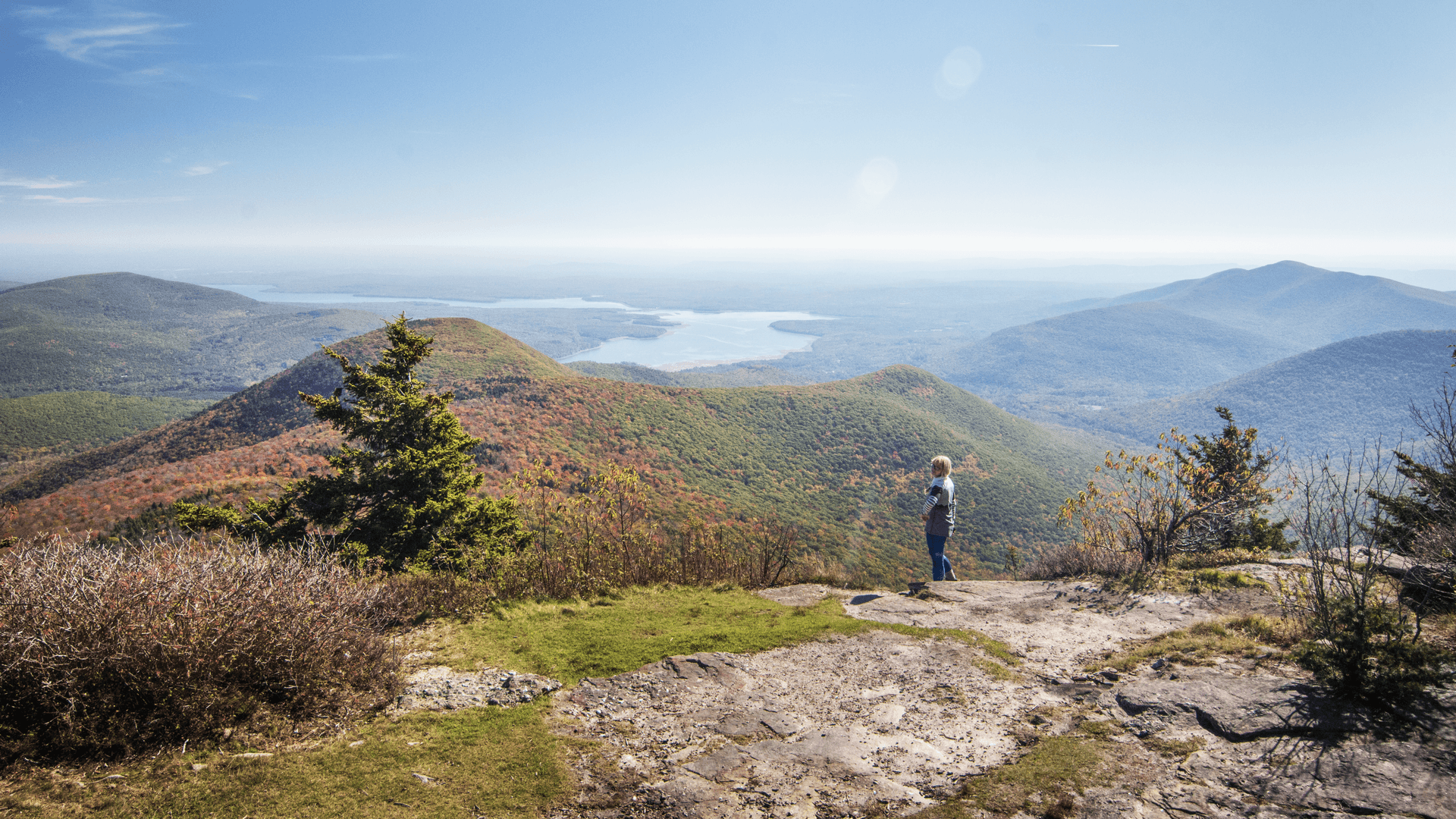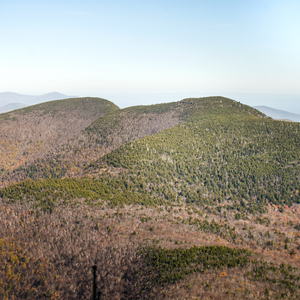You are here
The Slide Mountain Wilderness is roughly 90 miles north-northwest of Manhattan and is home to several peaks in the Catskill 3,500-foot Club. This adventure begins at the Woodland Valley Campground (which has a parking fee in the summer) and follows the red-blazed Burroughs Range Trail to the summit of Wittenberg at 3,780 feet. The round-trip distance to Wittenberg is about 8-miles and ascends approximately 2,500-feet. You can add another 2 miles to your trek by continuing on the same trail to Cornell Mountain. Or, if you're really enthusiastic, continue onto Slide Mountain and complete the 10-mile trek across the ridge to the parking area at the on Olivera Road! Be prepared for some rock climbing and very steep ascents along your way. Dogs are allowed, but many sections would prove difficult for those on four legs. This trail has spectacular views across many of the surrounding Catskill peaks and over the Ashokan Reservoir out into the Hudson Valley. The region is very popular with adventurers throughout the year, so visit during the week if you are concerned about encountering too many people. The New York Department of Environmental Conservation has produced a map of this wilderness area to help you navigate your route. Please respect the state land use regulations and follow all outdoor safety practices.
Wittenberg Mountain
From the Woodland Valley Campground, look for a trail sign leading to a bridge over the Woodland Creek. Cross over the water and into the woods, where you will see a large sign with information about the various trails and distances to each of the peaks. The path proceeds to the left, up a hill, and immediately embarks on a steep climb for about a half-mile to the southeast. You will pass a box on a tree with a trail registration book that you can use to log your journey. After reaching about 1,700-feet, it turns to the southwest and ascends another 600-feet before turning back to the southwest and up another 500-feet.
Finally, the path begins to level off, slightly, at about 2,700 feet, and follows a gradual ascent with some minor dips for the next half mile. At the intersection of the yellow-blazed Terrace Mountain Trail, stay to the right and continue to follow the red blazes. Within a short climb, you will come to another intersection indicated by an arrow that points to the blue-blazed Phoenicia East Branch Trail, another approach that cuts across the ridges of Cross Mountain, Mount Pleasant, and Romer Mountain. Remain on the Burroughs Range Trail and continue to follow the red blazes to the right.
The smell of fir trees begins to pervade the area as you gain elevation. Now the trail becomes even steeper as you climb up the northern face of Wittenberg. Turn around to catch a glimpse of the Hunter West Kill Wilderness behind you. There is some rock scrambling that becomes more intense as you get closer to the summit. Almost all of the surrounding trees are firs now with some white paper birch adding some variety. After another strenuous mile, the path finally begins to level off at 3,700 feet and suddenly comes to a wide clearing with an open vista. Samuels Point and the Ashokan Reservoir, one of New York City’s sources of drinking water, are immediately before you. You can see Balsam Cap (3,623 feet) to the south as well as Hanover Mountain. This is perhaps the best view along the trek. Visitors flow to this region in the fall to see waves of colored foliage painted across the land. From here, you can can turn back or continue on a little bit further to Cornell Mountain and bag another Catskill peak over 3,500-feet.
Cornell Mountain
The Burroughs Range Trail continues to the west. The traverse from here to Cornell Mountain, the next peak, is less than a mile and rather moderate. You will continue along the mountain ridge and dip into a small valley. There are some interesting walls of rock that need to be navigated on your route. Upon reaching the western tip of the summit, there is a view over the trees to the west. Slide Mountain is the main peak in sight across the valley. The path descends over rock slabs and through balsam firs until they begin to dissipate again at lower elevations.
This mountain is named after Senator Thomas Cornell, who also served as president of the Cornell Steamship Company and the Ulster and Delaware Railroad. He began his enterprise with cargo, but he expanded the fleet to include the passenger steamboat Mary Powell, a luxurious ship often pictured moving up and down the Hudson River Valley that carried the likes of Oscar Wilde, Walt Whitman, and European royalty. Cornell also established four small railroads, including the Kaatskill Railroad, which served the Catskill Mountain House in northern Greene County. These track expansions opened the Catskills to tourists and gave him the opportunity to open massive hotels such as the Grand Hotel above Pine Hill and the Laurel House near the Catskill Mountain House. Before decending down the mountain, turn back and retrace your steps back to the trailhead at the Woodland Valley Campground. If you're feeling extra ambitious, continue into the valley and up the very steep eastern slope of Slide Mountain!
Logistics + Planning
Current Weather: Powered by Dark Sky

































Comments
Sign In and share them.